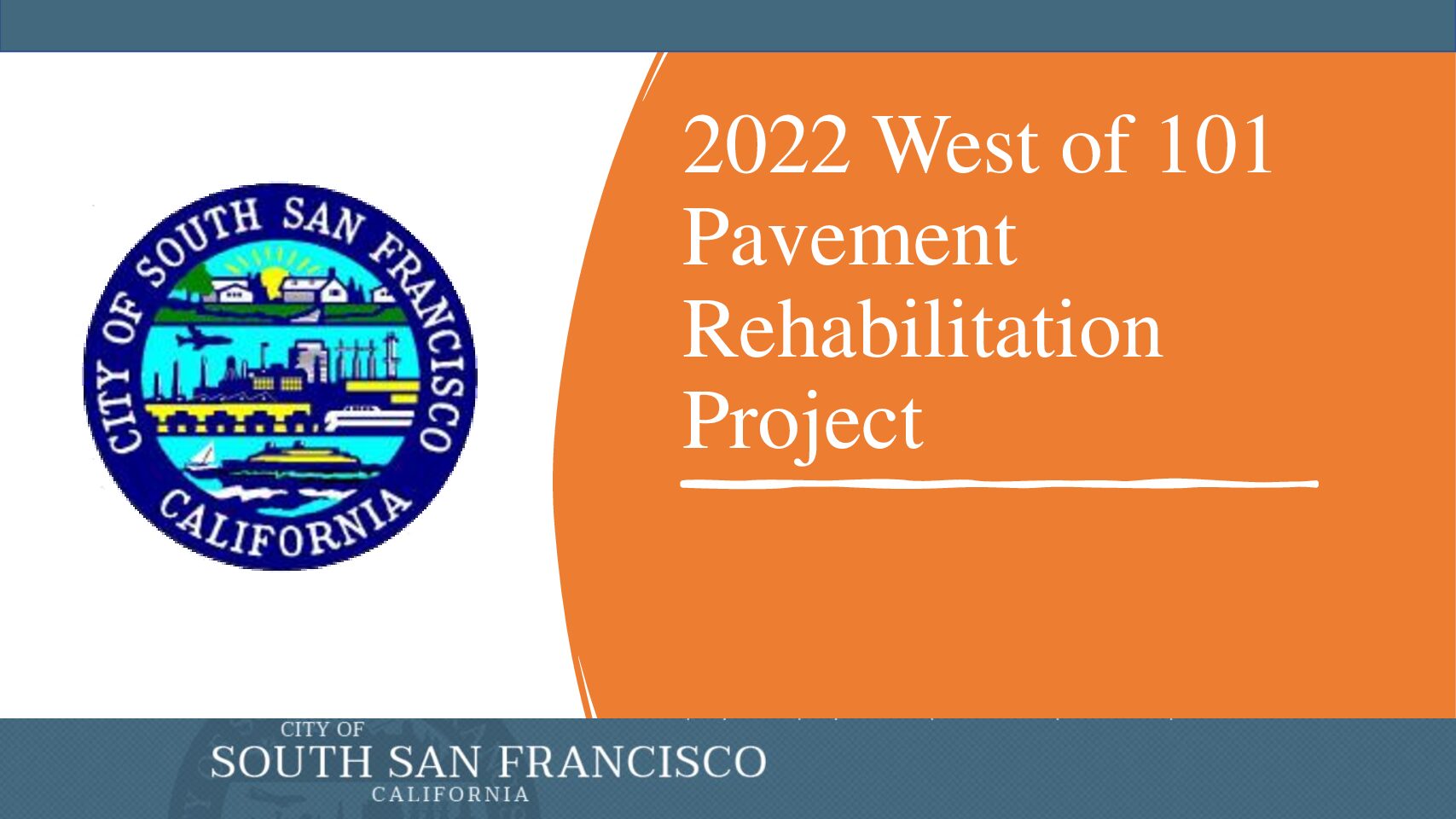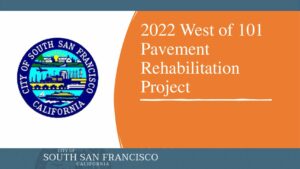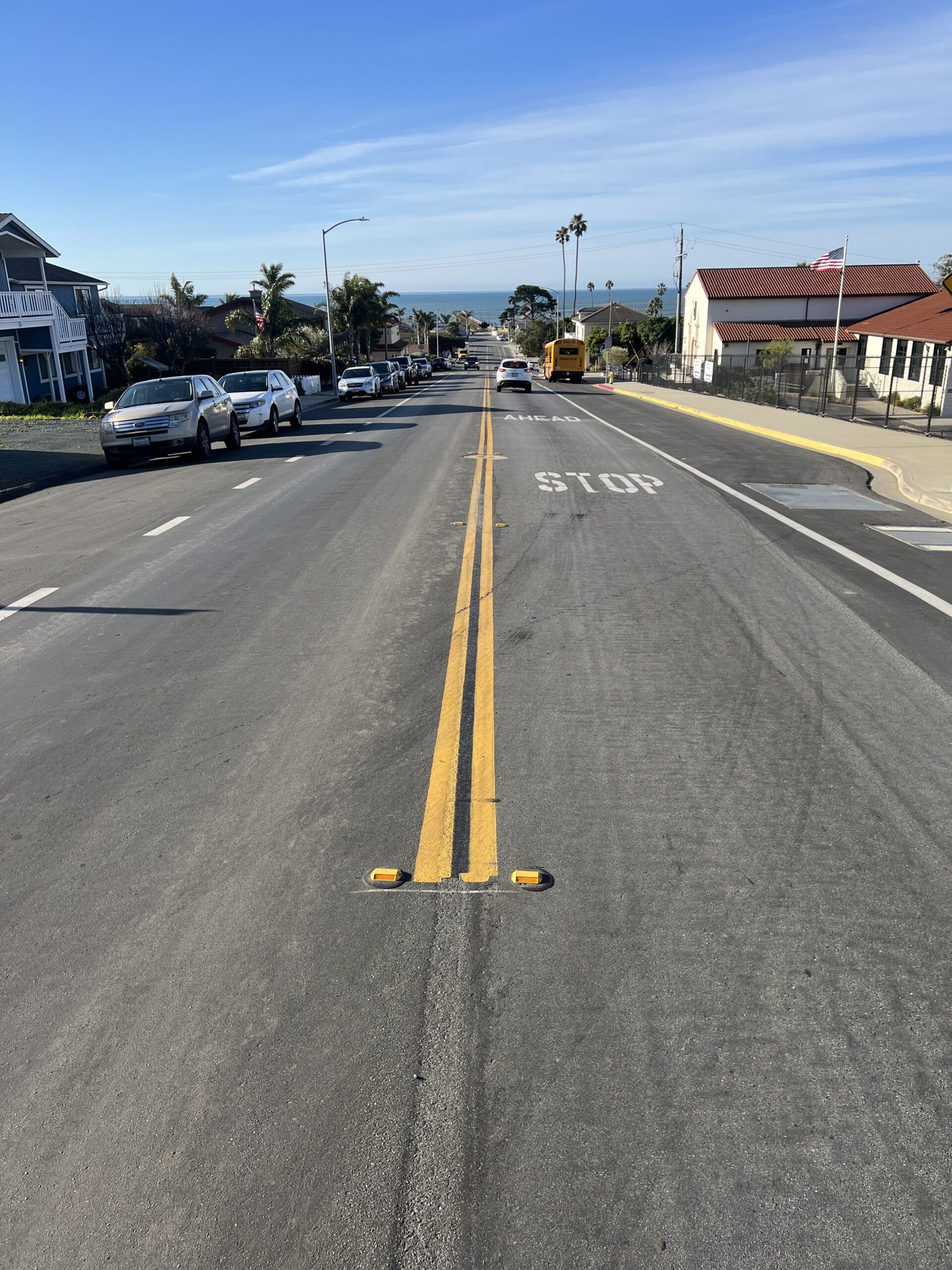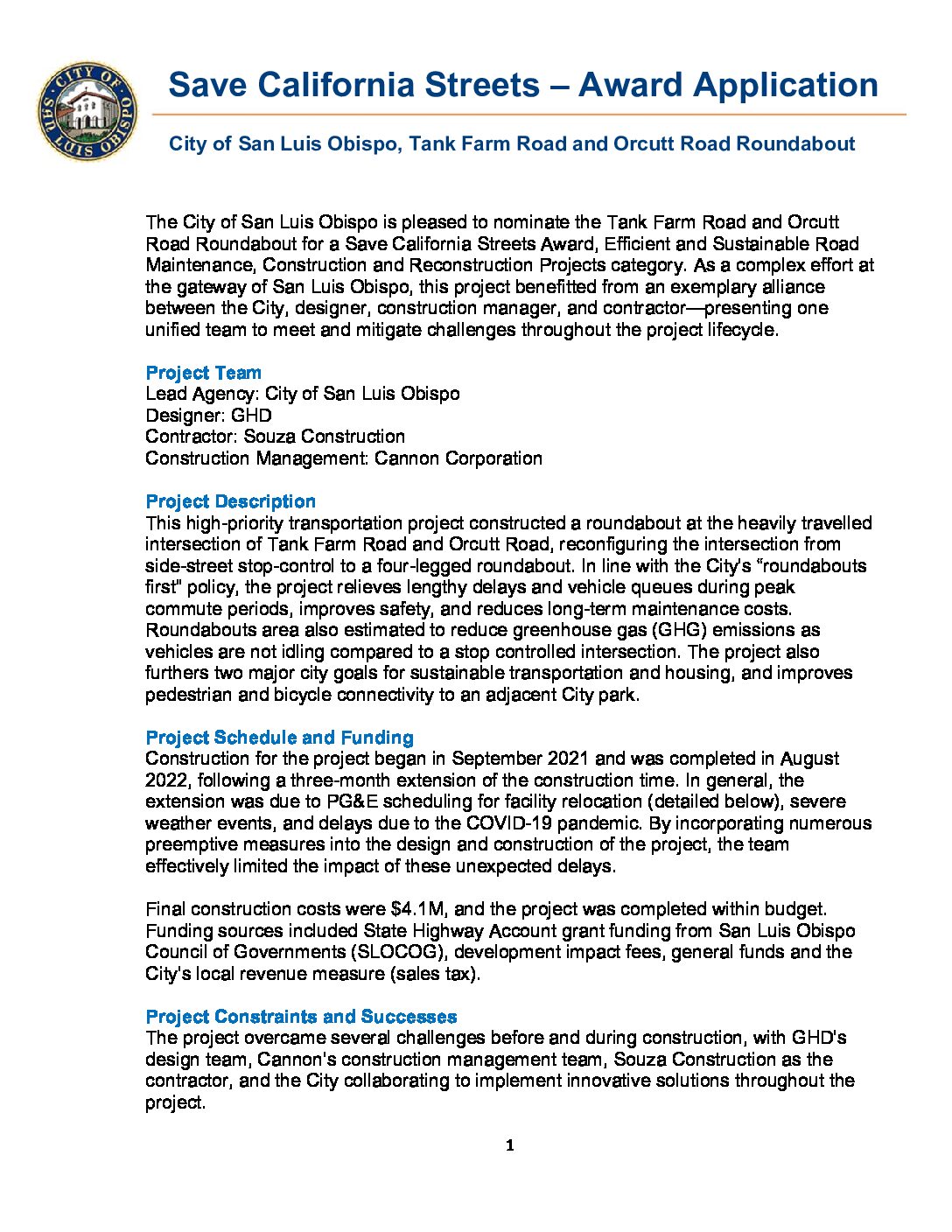SSF 2022 West of 101 Pavement Rehabilitation Projects
With over 140 centerline miles of roadway, the City of South San Francisco’s (SSF) pavement network represents a highly visible and valuable asset to the community and local businesses.
The residents of the City of SSF (City) identified the condition of the roadways a priority concern through a public outreach process to support the Measure W sales tax the City approved in 2015. As a result, the City secured a $24 Million in bond funding for the SSF Pavement Management Program (PMP) in 2021 to catch up on deferred street maintenance.
The City hired Nichols Consulting Engineers (NCE) of Richmond, California for design of the 2022 West of 101 Pavement Rehabilitation Project.
By performing most of the maintenance in one large-scale project, as opposed to smaller annual projects, the City was able to maximize economies of scale; significantly reduce design, construction mobilization, and future street maintenance costs. This program brought meaningful and long-lasting improvements to the community extended ADA accessibility on local streets, and enhanced street aesthetics and multimodal transportation functions. The project provided immediate increase to the City’s network pavement condition index (PCI) and a positive message sent to the resident’s concerns of roadway condition. The rehabilitation work plan addressed approximately 21 centerline miles of streets (18% of entire network). The overall network PCI improved from 76 to 81 (good to excellent condition) upon completion of construction in 2022.
By completing the rehabilitation on all deferred street candidates west of Highway 101 the City reduced annual maintenance costs from $4.5 Million dollars to $2.0 Million dollars. It is estimated that the City will save approximately $15.5 Million dollars in rehabilitation costs over the next 15 years. The annual savings are combined with the upfront savings from the project’s economies of scale.
Aside from the practical aspects of the project the City and NCE collaborated to incorporate sustainable design solutions to the various work elements. The use of recycling technologies, Cold-in-Place recycling (CIR), was considered to reuse the City’s existing pavement structure materials, thus minimizing truck traffic to and from the job site, disruption to the community, and stretch the paving dollars. Although rubberized paving has a higher upfront cost compared to conventional methods this design maximized the use of rubberized materials to extend pavement life and aid in diverting tires from landfills. Finally, the Project included safety improvements to the City’s bicycle and pedestrian network. These goals included improving bicyclist comfortability, interconnectivity of the bike network, and pedestrian ADA accessibility for multimodal street function.





Add Comment